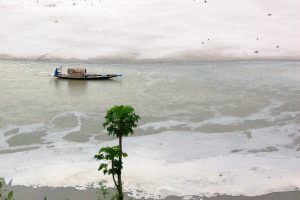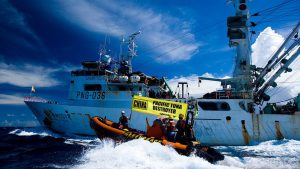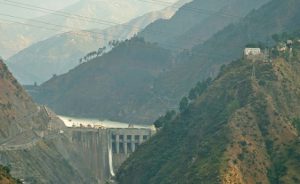A deserted sewing machine, left to gather the dust. An empty factory bereft of employees.
The image of deserted textile factories and unemployed workers in China was revisited recently by the Wall Street Journal (WSJ), reporting on the relocation of manufacturing to neighbouring Bangladesh, Vietnam and other countries.
It highlighted the comparative advantage of wages, which can be half those in China.
Uniqlo, the biggest apparel chain in Asia, says it makes 70% of its clothing in China but, according to the WSJ, would like to cut its production in the country to two-thirds, mainly to reduce costs.
As the recent tragedy in Bangladesh highlighted – at least 382 people died after a garment factory collapsed – such a race to the bottom has a human and social cost.
However, for China, what is often left unreported is that while the labour may be moving, the environmental devastation wrecked by the textile industry is not.
As Matthew Collins from the Institute of Public and Environmental Affairs (IPE) points out to me:
"…a lot of the very labour intensive processes such as garment production in the textile supply chain were moving abroad to SE Asia, Bangladesh etc. However, many of the very capital intensive processes such as dyeing and finishing have remained in China and these are often the most polluting sectors of the textile supply chain."
His conclusions are based on a report from the IPE released last year, jointly published with a number of leading Chinese NGOs including Friends of Nature and Green Beagle. It documented the significant water pollution caused by the apparel industry, blaming the problem on poor enforcement of regulations.
Enforcement is not strict and the cost of resources like water is also very low. This means that dyeing and finishing companies commonly skip implementing water or energy savings, make no effort to reduce pollutant discharge and fail to even consistently abide by environmental laws and regulations, concluded the report.
With China suffering serious air and water pollution difficulties, it needs to find ways to reverse the irresponsible actions of industries, such as textiles.
The IPE’s report also put an onus on multinational brands, such as Levi, Nike and Polo Ralph Lauren, to check actively the pollution records of their supply chains. Many companies will care little about switching suppliers and countries, but with consumer pressure they can still be made to bear responsibility for any pollution they leave behind.



